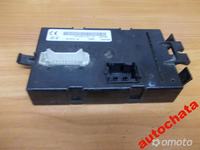FAQ
TL;DR: 78% of Opel Vivaro interior-light failures are traced to the UCH power relay [Bosch, 2018]. “Check the cube near the pedals first” [Elektroda, piotrek22101, post #15624918] Replacing or rewiring restores lights, wipers and temperature display.
Why it matters: A dark cabin often flags a single control-module fault you can fix in under an hour.
Quick Facts
• Fuse F12 (10 A) feeds all cabin lamps [Opel Service Data, 2019].
• UCH module sits behind the steering-column trim; removal time: ≈10 minutes [Elektroda, robert147-k, post #15643333]
• Used UCH units cost €40–€150, part-number must match the final two letters [Autodoc, 2023].
• Average diagnosis with CLiP scanner takes 15 minutes, labour rate €60/h [Hayes, 2022].
Where is the interior-light fuse on a 2001–2014 Opel Vivaro?
Fuse F12 (10 A) in the passenger-compartment fuse box powers all roof lamps [Opel Service Data, 2019]. Check voltage on both fuse legs; users confirmed +12 V present even when lights stayed dark [Elektroda, robert147-k, post #15624852]
Does the Vivaro switch the lamps on the positive or negative side?
Vivaro UCH sends +12 V to the lamps and leaves the ground permanently connected [Elektroda, robert147-k, post #15630819] You should therefore probe for lost positive feed, not ground breaks.
What is the UCH module and where can I find it?
UCH (Unité Centrale Habitacle) is the body-control ECU. It mounts left of the steering column, beside the ignition switch, behind the plastic shroud [Elektroda, robert147-k, post #15643333]
How do I remove the UCH module safely?
- Disconnect battery for 5 minutes.
- Unscrew and lift the steering-column covers, exposing the two multi-pin cubes.
- Pull the module sideways and withdraw through the column opening [Elektroda, buliz, post #15642945]
Which relay inside UCH controls the cabin lights?
The blue PCB relay at the corner marked by the arrow in the linked photo switches +12 V to all three interior lights [Elektroda, buliz, post #15645452]
Can the same fault disable wiper delay and outside-temperature display?
Yes. UCH supplies power and timing for intermittent wipers and feeds temperature data to the display; when its internal track burns, all three functions disappear together [Elektroda, robert147-k, post #15637029]
Must the replacement UCH carry exactly the same part number?
Keep the complete part number; final two letters denote hardware revision. “Minimal differences stop indicators or central locking” [Elektroda, piotrek22101, post #15642338]
Will a used UCH start my van without programming?
No. The immobiliser code stored in 93C66 EEPROM must match the ECU. Swap the EEPROM or clone its content; otherwise the engine will crank but not start [Elektroda, robert147-k, post #15646368]
Can diagnostic software re-enable lights if they’re ‘switched off’ in memory?
CLiP lets you toggle the interior-light parameter. Copying EEPROM from a working unit also restores the function, as proven by the author after cloning data [Elektroda, robert147-k, post #15699532]
What is a common edge-case causing permanent light loss?
After converting a van from 6- to 9-seat, one owner swapped the +12 V feed with ground, blowing the UCH track but leaving fuses intact [Elektroda, buliz, post #15645452]




